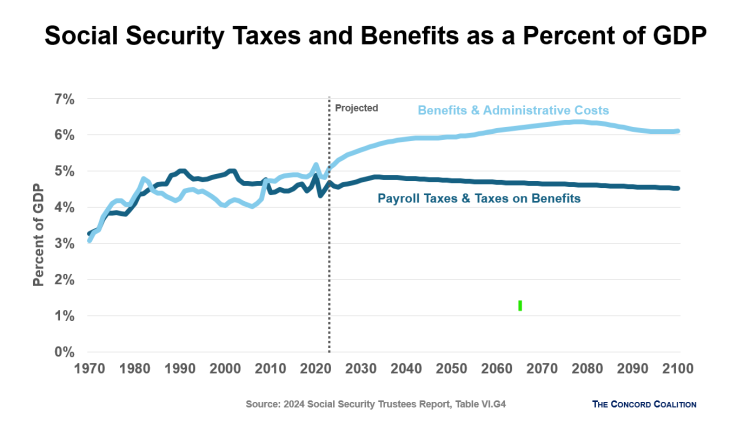Social Security turns 89 today, providing an opportunity to review its accomplishments while taking a hard look at its future — including the need to put the federal government’s largest program on a sustainable path.
“Politicians of both major parties are quick to promise that they will not touch Social Security. If they truly mean that, they are condemning the program to an uncertain future of sudden and substantial benefit cuts in about 10 years when the combined Old-Age and Survivors Trust Fund (OASI) and Disability Trust Fund (DI) are projected to be depleted. Rejecting the Do Nothing Plan and enacting needed reforms to put the program on a sustainable path for the next 89 years or more is the best birthday present we could give to Social Security,” said Concord Coalition executive director Bob Bixby.
Social Security provides a vital floor of protection for retired and disabled workers, as well as their dependents and survivors. But the program, which had expenditures of $1.4 trillion last year, faces major challenges. It has been running annual cash deficits since 2010. Meanwhile, the system’s expanding gap between benefit payments and dedicated revenues will contribute to future federal budget deficits. Here are some basic facts:
- Social Security provides retirement benefits to more than 90 percent of elderly Americans. Nearly 40 percent of seniors receive more than half of their income from Social Security.
- But Americans are living longer and having fewer children. That means there will be fewer workers to support each beneficiary in the future. As a result of this demographic shift, Social Security will be unable to pay future benefits in full and on time.
- The Social Security program has two trust funds, Old-Age and Survivors Insurance (OASI) and Disability Insurance (DI). The Social Security Trustees have projected the combined trust fund balance will be exhausted in 2035 and beneficiaries will face an across-the-board cut of roughly 17 percent, with even larger reductions thereafter.
- The trust fund balance merely provides the legal authority to pay benefits. What matters from a cash-flow perspective is the amount of dedicated revenue relative to the cost of benefits. From this perspective, the annual shortfall is projected to rise from 0.6 percent of GDP in 2024 to 1.3 percent of GDP in 2054. That’s equivalent to $366 billion in today’s dollars.
- Congress and the President have previously acted in a bipartisan manner to address the financing short-fall facing Social Security, most recently in 1983. They must undertake such an effort again. The sooner they do, the more time the public will have to prepare for the changes necessary to secure their future retirement benefits.

“Many analysts of diverse perspectives have offered an array of thoughtful suggestions. It is an appalling lack of political will, as opposed to substantive options, that puts Social Security’s future at risk,” Bixby said.
As stated in the 2024 Social Security Trustees report, “Lawmakers have many options for changes that would reduce or eliminate the long-term financing shortfalls. Taking action sooner rather than later will allow consideration of a broader range of solutions and provide more time to phase in changes so that the public has adequate time to prepare.”
“If lawmakers heed the Trustees’ advice, we can celebrate Social Security’s 90th birthday next year with a sustainable future. If not, we’ll be one year closer to the brink.” Bixby added.




